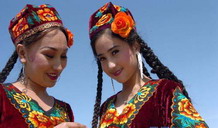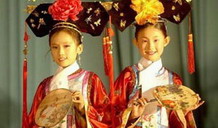History of the Mongolian Ethnic Group
In the 13th century Mongolia was one of the most powerful states in the world. All major world trade and political relations went through the capital of Mongolia of that time, Kara Khorino (which is situated in the present territory of the Mongolia), and the flow of ambassadors from France, sons of Georgian and Armenian sovereigns, Russian princes, and Chinese officials was unceasing.
After having established the state, following the custom of the ancient nomads, Genghis Khan undertook campaigns against the neighboring states. As a result of the wars undertaken by Genghis Khan and his successors with the purpose of "conquering the whole world" Mongolia became a powerful empire, extending from the East China Sea to Western Europe, covering vast areas of Europe and Asia. After the death of the last Mongolian Emperor Mongke in 1259, the Mongol Empire broke up into the Golden Horde of Batuu Khan (Genghis Khan's grandson), inhabiting the Russian Kipchak steppe; the Kingdom of Tsagadai (Genghis Khan's son), who had conquered East Turkestan and Uzbek, and the Yuan State of Khubilai Khan, which included today's Mongolian and Chinese territories.
The wars waged by the Mongols resulted in the dispersal of the Mongolian tribes, a considerable reduction in the size of the Mongolian population, and the destruction of a lot of cities and villages in the conquered countries. But on the other hand, these wars precipitated the process of unification of various Asian and European tribes, and drew the East and West nearer together.
After the defeat of the Mongolian Yuan Dynasty in 1367 by the Ming Dynasty, the Mongolian Khans returned from Beijing to their native territory. At this time Mongolia ceased to be the center of world trade and culture, but the Mongols retained their home territory.
During the 14th and 15th centuries, the Mongols lost their previous unity and were divided into Eastern Mongols and Western Mongols (Oirat Mongols). Then in the 16th century the Eastern Mongols split up into Outer Mongolia (Khalh Mongolia) and Inner Mongolia. The Mongols waged war on each other, and dominance went first to Oirat Mongolia and then to East Mongolia. East Mongolia was the more powerful. At the beginning of the 17th century, the Zurchid tribe of Manchurians became powerful and established the Qing Dynasty (1644-1911). The Manchurians subdued Inner Mongolia in the 1630s, Khalh Mongolia in 1691 and Oirat Mongolia in 1757.






